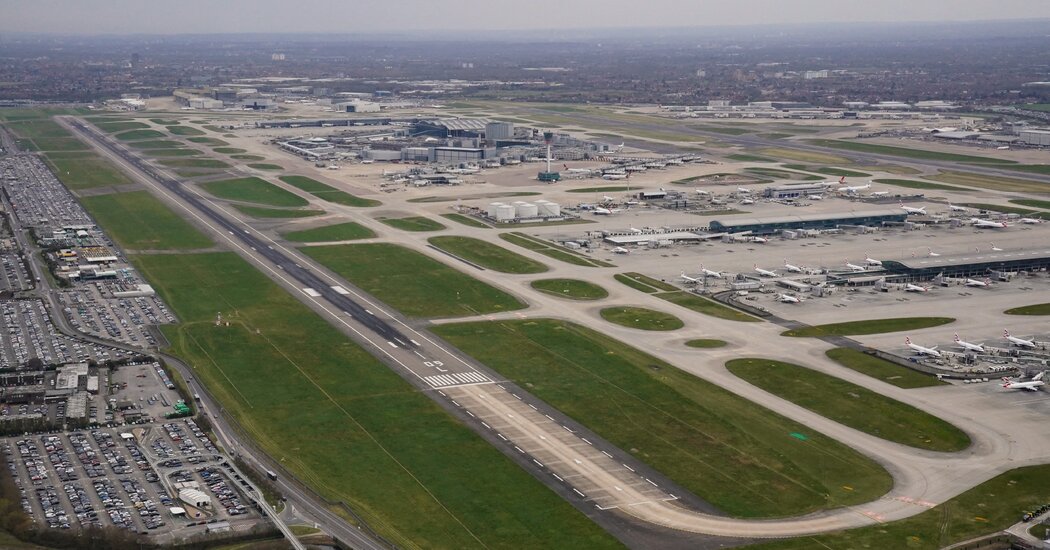Heathrow Airport in London was plunged into chaos after a fire at an electrical substation shut down operations at one of Europe’s busiest air hubs, forcing the airport to cancel or divert more than 1,000 flights on Friday and removing a global linchpin of air travel.
Heathrow’s chief executive, Thomas Woldbye, described the disruption as “unprecedented,” telling reporters on Friday that the airport had lost power equal to that of a midsize city, and that though backup systems worked as they should, there had not been enough power for the entire airport.
Some flights resumed late Friday. But Mr. Woldbye said, “We expect to be back in full operation, so 100 percent operation as a normal day” by Saturday.
The Metropolitan Police in London said later on Friday, “After initial assessment, we are not treating this incident as suspicious, although inquiries do remain ongoing.” The police said counterterrorism officials would lead the investigation into the cause of the blaze, which broke out Thursday night at an electrical substation northeast of Heathrow.
It was too early on Friday to calculate the precise cost of the outage. But the disruption raised questions about the resilience of Britain’s largest airport and why it appeared to be so reliant on a single electrical substation.
Residents of the Hayes neighborhood near the airport described hearing two loud bangs and seeing “a massive ball of flame” shoot into the sky on Thursday night. Minutes later, the airport said it was shutting down all air traffic, incoming flights were diverted, and passengers at Heathrow were sent home. Nearby residents were also evacuated.
By Friday morning, roads around the power station were cordoned off, and a helicopter hovered above. An odd stillness had descended on Heathrow. The runways were empty, the check-in desks quiet, digital flight information screens were blank, and passageways were dimly lit by emergency lighting. It was a lifeless calm not seen even during the early panicked weeks of the coronavirus pandemic.
Britain’s National Grid said on Friday afternoon that it had reconfigured its network to partly restore power at Heathrow on an interim basis. The substation held 25,000 liters of cooling oil, which fueled the large blaze and made it too difficult to extinguish, the London Fire Brigade said on Friday. The brigade said about 5 percent of the fire was still burning by Friday evening.
The airport closure resulted in dozens of flights from the…
Click Here to Read the Full Original Article at NYT > Travel…
